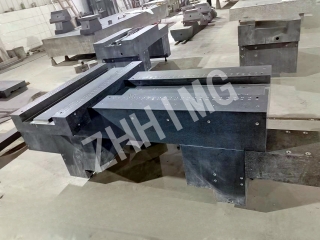PCB drilling and milling machines are important tools in printed circuit board manufacturing, helping to create the necessary holes and patterns on the PCB. The overall performance of these machines depends on several factors, including the design of the granite elements used in their construction. By optimizing the design of these elements, it is possible to improve the efficiency and accuracy of these machines. In this article, we will explore some ways to improve the performance of PCB drilling and milling machines through granite element design optimization.
Granite is a popular material for the construction of PCB drilling and milling machines due to its high stiffness, low thermal expansion coefficient, and good stability. However, the design of the granite elements can affect the overall performance of the machine. By making some key design changes, it is possible to improve the performance of the machine in several ways.
Firstly, the shape and size of the granite elements can have a significant impact on the machine's performance. The thickness of the granite elements should be optimized to ensure that they provide enough support for the machine while also reducing the overall weight. Additionally, the size and shape of the granite elements should be designed to minimize vibrations and improve the rigidity of the machine. This can be achieved by designing the elements with a certain geometry and size to achieve maximum resonance frequency, which promotes stability and reduces the impact of external forces on the machine.
Another important factor in optimizing the design of granite elements is to reduce the thermal expansion coefficient. Thermal expansion can cause the machine to deviate from the desired path during the drilling and milling process, which can negatively affect the accuracy of the machine. Designing the elements with low thermal expansion coefficients can help minimize these effects and improve the accuracy of the machine.
Another important design change to consider is the surface finish of the granite elements. The surface finish of the elements determines the friction between the elements and the machine, and can affect the smoothness of the machine's movement. By using polished granite elements, it is possible to reduce friction and improve the smoothness of the machine's movement. This can improve the overall accuracy of the machine by reducing the likelihood of deviations in the drilling and milling process.
In conclusion, optimizing the design of granite elements in PCB drilling and milling machines can have a significant impact on their performance. By considering factors such as shape and size, thermal expansion coefficient, and surface finish, it is possible to improve the overall efficiency and accuracy of these machines. Improving the performance of these machines can lead to increased productivity and reduced costs, making them a valuable investment for any PCB manufacturing facility.
Post time: Mar-18-2024

